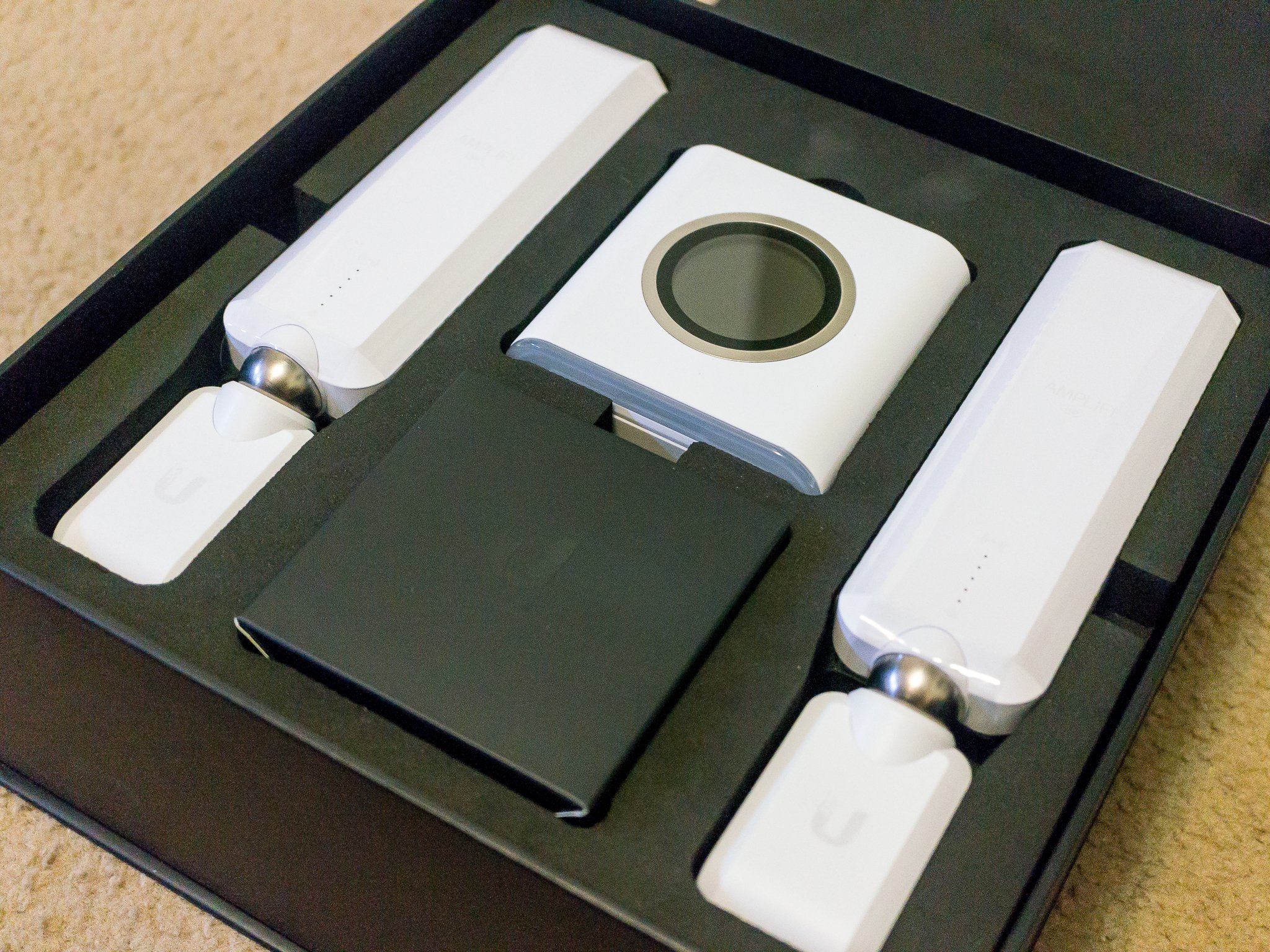Best answer: If you want a mesh Wi-Fi system that also has extra-long range the Amplifi HD mesh router system from Ubiquiti will work great for you. Be warned the satellites are large and not at all kid-friendly though.
A great, big mesh solution: AmpliFi HD WiFi System ($340)
Cruising at 10,000 feet
Most of the time whenever the discussion is about mesh Wi-Fi systems, the focus is on pinpoint placement of low-power satellites that put Wi-Fi exactly where you need it to be. Ubiquiti's Amplifi HD mesh router system can do that without any problems. But it also excels at another of the reasons folks need a mesh Wi-Fi system: to cover a huge area with good dependable Wi-Fi.
The Amplifi HD system delivers the most range of any mesh router we've tested.
The spec sheet lists the range of the basic system at 10,000 square feet, and that's not much if any of an exaggeration. Consisting of a single base station that connects to your cable modem and two tower-like satellites that plug directly into an outlet, the Amplifi HD outperformed the other mesh WI-Fi systems we tested when it came to range and overall coverage. And it does it all without any fancy setup or tweaking. Simply hook up the equipment, install the app on your smartphone and you're ready to go.
What is mesh Wi-Fi?
Mesh Wi-Fi systems do the same thing as a "regular" router, but use more pieces to do it. You start by adding the first piece and coupling it directly to your cable modem. If you're only trying to cover a small area, this might be enough. If so, it acts the same as a traditional Wi-Fi router does.
If you're trying to cover a larger area — especially one with "dead" spots when using a standard-style router, you can add more nodes to the mesh. That's a fancy way of saying you add a second or more satellite unit to the system. You can place this a good distance from the first piece and you don't need to add a cable of any kind between them.
Mesh Wi-Fi systems are a better way to get Wi-Fi where you need it than range extenders are.
Some mesh Wi-Fi systems, like Google Wifi or the Eero Home setup, can use the same pieces to act as the base or a satellite. Other times, as is the case with the Amplifi HD or the Eero Home basic system that uses "pods", the base station is different from the satellites. Don't worry, setting them up is still easy.
When everything is setup you have a Wi-Fi network that is extended in range because you have multiple units transmitting a Wi-Fi signal, but it's done without your connected device having to switch connections. The pieces of the mesh system use a separate channel to communicate with each other and programming tells everything when to connect to each piece. If you've ever used a Wi-Fi extender and had to change networks while doing it you know how much better this is.
As a plus, mesh Wi-Fi systems can be configured to transmit in a very small radius for pinpoint placement only where you need it or to cover as much area as possible as the Amplifi HD does. Both use the same mesh technology to do it.
Should you buy an Amplifi HD?
While I loved the range and network speeds the Amplifi HD system offered, I wasn't too sure about the design of the satellites themselves. They're big and they plug directly into an outlet, making them difficult to hide and a magnet for curious kids. If either of those things is a dealbreaker for you, passing on this one is probably a smart move. For everyone else, the Amplifi HD mesh Wi-Fi system offers great Wi-Fi all around your house and probably well into your yard.
Our pick
AmpliFi HD WiFi System
The long-range king
Ubiquiti's Amplifi HD system delivers the most coverage of the mesh routers we've tested and delivers a fast and dependable Wi-Fi network without any fuss or tedious setup. It does have some really big satellites though, so know that before you buy.


0 Response to "You Can See More: Should you buy a Ubiquiti AmpliFi HD mesh router solution?"
Post a Comment